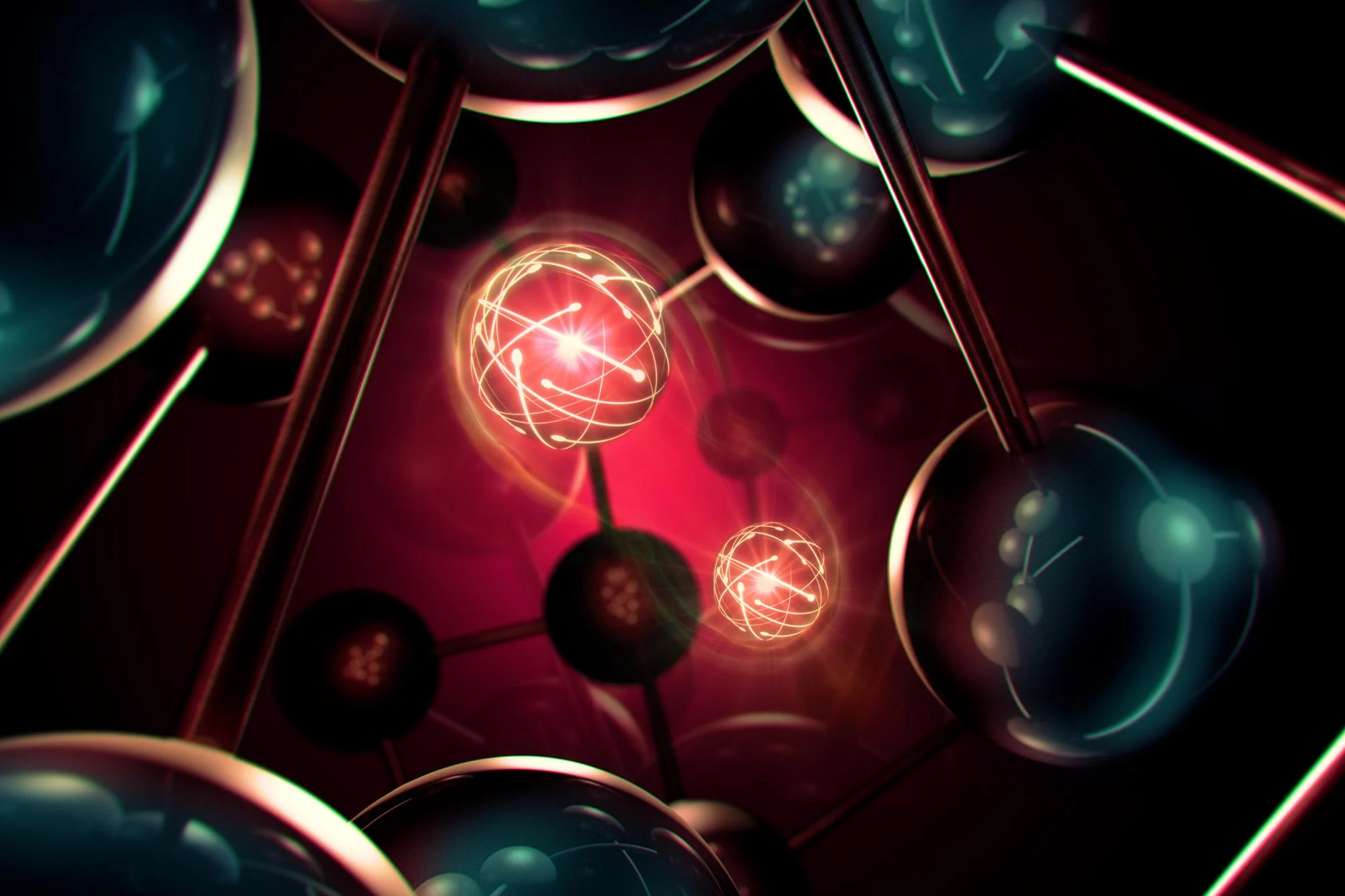New Quantum Processing Modalities Break the Ice Barrier
By Najla Zaidi | 02 Jul, 2025
The need for bulky and costly cryogenics is a major hurdle to practical quantum computing is being eliminated by innovative room-temperature quantum processing modalities.
Quantum computers have the potential to crack problems that would take normal computers many septillion years (10 to the 25th power) to solve. One of the biggest hurdles to making them practical is that most quantum computer modalities require cooling the quantum processor to -459 degrees Fahrenheit.
Quantum computers manipulate the subatomic phenomena of superposition and entanglement by creating bits of information, 1s and 0s, at a quantum scale, allowing virtually infinite possibilities to be considered simultaneously. However, quantum systems are extremely susceptible to "noise" which includes vibrations, gamma rays, magnetic fluctuations and, for most current quantum modalities, heat. Such noise can destroy quantum information, rendering computations meaningless.
Thermal noise must be eliminated entirely when quantum processors relies on superconductivity to enable quantum manipulations. Given current technology superconductivity can only be achieved at near-absolute zero temperatures, requiring most current quantum processors — like the latest quantum processors from Microsoft and Google — to be cooled using a large stack of specialized vacuum pumps and cryostats. This equipment is expensive, relies on liquid helium, and consumes considerable space and power.
Recent years have seen promising quantum computing processors that work at room temperature. Promising modalities include photonic systems, diamond NV-centers, metal organic framework (MOFs) with chromophores, magnetic nanomaterials and laser-cooled trapped-ion systems.
PHOTONICS
Encoding qubits in photons makes them naturally resistant to thermal noise. Photonic platform quantum computing uses light to form qubits. This can be achieved by either the state of individual photons (polarization/squeezed) or the quantum states of beams of photons (qumodes). Since photons are naturally resistant to thermal noise, multiple companies today are producing early-stage photonic quantum processors that do not need cooling.
Companies like QuiX and Orca Computing are building processors that work at room temperature though readout often still depends on cold detectors. “QuiX Quantum’s processors are already world-leading and ideally suited to create the most powerful photonic quantum computer we have yet seen,” said QuiX’s CEO Stefan Hengesbach. Machines from Orca Computing capable of time-bin boson sampling, an approach suited to machine learning and generative modeling, are also currently available on the market.
DIAMOND NV-CENTERS
Diamond lattices naturally protect qubits from noise. Engineered diamond was traditionally used for its applications in quantum sensing, but the research has evolved toward room-temperature quantum computing. Diamonds with tiny regular imperfections can form two-state quantum systems and hence, qubits.
Nitrogen-vacancy (NV) centers have spin states that can be used to represent 1s and 0s. Because these qubits are naturally insulated from noise sources in the environment by lattices of carbon atoms in diamonds, they are good candidates for room-temperature quantum computing. Supercomputing centers and aerospace companies have invested in diamond-defect technology from the likes of Quantum Brilliance and XeedQ. XeedQ’s XQ1 is the first multi-qubit mobile quantum processor that is room-temperature operable, energy-efficient, green and an affordable device that you can buy now for your home office.
CHROMOPHORES IN MOF
A group of researchers led by Associate Professor Nobuhiro Yanai from Kyushu University’s Faculty of Engineering, reports they have achieved quantum coherence at room temperature by embedding a chromophore, a dye molecule that absorbs light and emits color, in a metal-organic framework, or MOF, a nanoporous crystalline material composed of metal ions and organic ligands.
To suppress the molecular motion and achieve room-temperature quantum coherence, the researchers introduced a chromophore based on pentacene (polycyclic aromatic hydrocarbon consisting of five linearly fused benzene rings) in a UiO-type MOF. “The MOF in this work is a unique system that can densely accumulate chromophores. Additionally, the nanopores inside the crystal enable the chromophore to rotate, but at a very restrained angle,” says Yanai.
Upon photoexciting electrons with microwave pulses, the researchers observed the quantum coherence of the state for over 100 nanoseconds at room temperature. While the coherence was witnessed only for nanoseconds, the findings will pave the way for designing materials to generate multiple qubits at room temperatures.
MAGNETIC NANOMATERIAL
Scientists at The University of Texas at El Paso (UTEP), led by Associate Professor Ahmed El-Gendy, have developed a quantum computing material that can operate at room temperature. The breakthrough material, a blend of aminoferrocene and graphene, has magnetic properties 100 times stronger than pure iron, eliminating the reliance on rare Earth materials for magnet construction.
Their goal was particularly ambitious, aiming not only for room temperature quantum computing but also to eliminate reliance on rare Earth materials for constructing the necessary magnets. El-Gendy explained, “All magnets are currently made from rare Earth materials, and we have a shortage of them. We’re going to face a problem soon of not having these materials to make magnets for any industry. Imagine if we get to that point.”
LASER-COOLED TRAPPED-ION SYSTEMS
Laser-cooled trapped-ion systems currently walk the line between conventional and room temperature systems. These systems do not require supercooling, but they do require precise environmental controls and laser systems, unlike truly room-temperature platforms like diamond NV centers or photonic systems.
IonQ uses individual ionized rare-earth ytterbium atoms floating inside of an ion trap within a vacuum as qubits. Atoms of the same element (and the same isotope) are identical, so they make great qubits, according to Chris Monroe, IonQ’s Chief Science Officer.
Using these inert atoms IonQ has developed a system that chills the individual ions to near-absolute-zero levels using Doppler cooling and other laser-based cooling techniques while the apparatus operates at room temperature. The ions cool as they absorb and emit photos with no refrigeration needed.
The company has developed a next-generation ion trap vacuum package prototype that leverages Extreme High Vacuum (XHV) technology to enable compact, room-temperature quantum systems. This breakthrough marks a significant step toward practical, scalable quantum computing solutions for real-world applications.
By 2030 quantum computers will begin to change our lives with miracle materials and drugs, efficient power generation, efficient commerce and finance, and perhaps even create pathways to world peace. In the meantime we can look forward to regular reports of incredible breakthroughs in the global race to develop practical quantum processors to accelerate solutions to our most baffling problems.
By 2030, Quantum computers will influence our daily life, including commerce, finance, health and global peace.

Entangled qubits in quantum computing.
Asian American Success Stories
- The 130 Most Inspiring Asian Americans of All Time
- 12 Most Brilliant Asian Americans
- Greatest Asian American War Heroes
- Asian American Digital Pioneers
- New Asian American Imagemakers
- Asian American Innovators
- The 20 Most Inspiring Asian Sports Stars
- 5 Most Daring Asian Americans
- Surprising Superstars
- TV’s Hottest Asians
- 100 Greatest Asian American Entrepreneurs
- Asian American Wonder Women
- Greatest Asian American Rags-to-Riches Stories
- Notable Asian American Professionals

